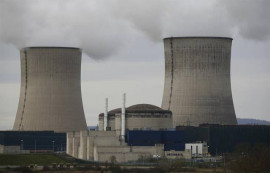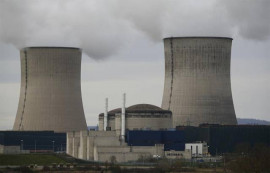
While closely observing the nuclear history with regard to nuclear deterrence, it is imperative to note that the acquisition of nuclear weapons capability and subsequently the essence of nuclear deterrence played a significant role in a state’s foreign and defence policies.
The sheer purpose of nuclear weapons was soon realised by the rationale of nuclear actors that these weapons are for ‘deterrence purposes’ rather than an ‘instrument of war’. Later it was realised that even a small-limited war could escalate to a bigger military war involving nuclear weapons that in turn could erode the essence of nuclear deterrence.
Bernard Brodie, a US civilian military strategist, rightly quoted with regard to nuclear deterrence in his book Absolute Weapon: “Thus far the chief purpose of military strategy has been to win wars. From now on its chief purpose must be to avert them. It can have almost no other useful purpose.”
The bulk of contributions in the field of nuclear strategies during the Cold War period provided a sense to nuclear weapons states that these weapons are to be treated differently, given the amount of destruction they could cause upon others if and when they are unleashed.
Perhaps it is this particular fear associated with nuclear weapons that contributed towards nuclear deterrence, commonly known as ‘nuclear peace’. Until today, nuclear optimists are proud to declare that “two nuclear weapons states do not fight major wars.” Indeed, since Hiroshima and Nagasaki, nuclear weapons are not used, although advanced conventional forces are used by major powers.
Nevertheless, the risk of military escalation to major wars that could include the use of nuclear weapons has not completely diminished. This risk existed during the peak of the Cold War, when both the Soviet Union and the US possessed thousands of nuclear weapons with sophisticated delivery systems that could kill each other. And the similar risk continues to exist in the contemporary nuclear world.
Given the risk of accidental nuclear war and the risk of escalation through nuclear weapons, world leadership belonging to nuclear and non-nuclear weapons states realised the concepts of arms control and disarmament. Therefore, a number of international treaties were crafted both at bilateral and multilateral levels with an agreed principle that one day these states would strive for complete disarmament.
In this context, a number of nuclear weapons free zones were also created encouraging states within the said zone not to go nuclear. Although various arms control processes did succeed particularly between the Soviet Union and the US, reducing the danger of war and sustaining deterrence stability between these two Cold War powers, but complete nuclear disarmament has not yet fully strategised between nuclear and non-nuclear weapons states.
Despite the creation of the Non-Proliferation Treaty (NPT), the largest treaty with an indefinite life extension since 1995, the Comprehensive Test Ban Treaty (CTBT), yet to be enforced, the proposed Fissile Material Cut-Off Treaty (FMCT) and rising significance of the Nuclear Suppliers Group (NSG) within the contemporary nuclear politics, nuclear disarmament is not taking place anywhere.
Nuclear weapons still continue to exist despite the Obama’s Prague speech in 2009, dreaming about the world free from nuclear weapons followed by a number of Nuclear Security Summits. Although both the US and Russia successfully crafted the New Start Treaty enforced in 2010, enabling to reduce their deterrent forces to 1,550, conventional and nuclear forces modernisation, tactical nuclear weapons, ballistic missile defence system and long-range bombers are not part of the discussion. These indicate the sheer restrictions of an arms limitation treaty even at the bilateral level.
Many in the US alone think of the irrelevance and impossibility of nuclear disarmament. The strong US observations against the so-called Nuclear Ban Treaty in March 2017 at the United Nations is a reflection of the same traditional perception of keeping nuclear weapons without going for a nuclear zero. The last US Nuclear Posture Review (NPR) in 2010 itself declares that the US would continue to have nuclear weapons as long as nuclear weapons exist. The upcoming NPR might not bring a bigger change for the international community. All the major and recognised nuclear weapons states do not agree with the idea of nuclear disarmament.
Almost every nuclear weapons state considers nuclear weapons for security purposes for their ultimate survival and existence. Security paradigm in realpolitik remains the predominant explanation as to why and how states acquire nuclear weapons. This increases the essence and value of nuclear weapons, even more in the contemporary nuclear politics. For example, the US certainly faces a security dilemma, it can neither uplift the nuclear security guarantee from both its European and Asian allies, nor let them acquire their own nuclear capability.
First, if the US uplifts its nuclear guarantee and withdraws its forces from its allies, they could either face vulnerabilities against possible threats or they could quickly develop their own nuclear capabilities. Thereby, creating a strategic balance that could then be, what Lawrence Freedman calls a “dead end of nuclear strategy.”
Second, while letting the Asian and European allies go nuclear, the US influence of extended deterrence will largely get affected. This would then mean the US power projection over these countries will reduce greatly. This could also deal a blow to the international non-proliferation regime as the US largely considers its extended deterrence a service to the international non-proliferation regime, where states under the US nuclear umbrella may not necessarily go nuclear.
In addition to this, there are no signs of nuclear disarmament between the nuclear weapons states in the future. Each nuclear weapons state makes a convincing argument for retaining its own nuclear weapons until their security concerns are fully addressed to their level of satisfaction.
The international non-proliferation regime has contributed little, if not much, in containing the spread of nuclear weapons states. However, it is to the credit of these non-proliferation regimes that today we witness only nine nuclear weapons states compared to that during the Cold. That being said, the international non-proliferation regime such as the NPT, CTBT, the proposed FMCT, the NSG as a rising cartel group etcetera, are not free from weaknesses. The prospects for a universal arms control regime and a nuclear ban treaty get dimmer.
Published in The Express Tribune, April 22nd, 2017.
Like Opinion & Editorial on Facebook, follow @ETOpEd on Twitter to receive all updates on all our daily pieces.












































COMMENTS (1)
Comments are moderated and generally will be posted if they are on-topic and not abusive.
For more information, please see our Comments FAQ